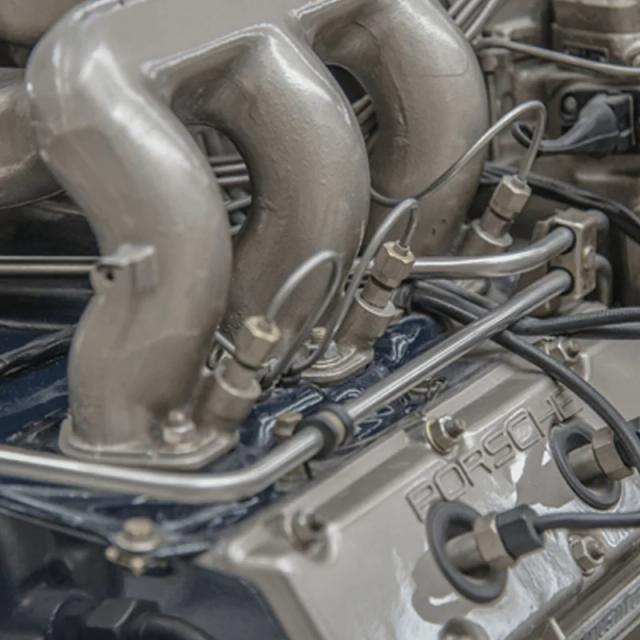
Learning how to change the engine oil in your car without going to a mechanic can save you hundreds of pounds every year. Once you've acquired the necessary tools and understand the workings of your vehicle, you'll be able to get this job done in under 30 minutes. It's a relatively straightforward task that anyone can do, but you can make quite a mess if you aren't prepared.
You can find the right oil for your car within our engine oil section. Just enter your reg number or make and model, and we’ll do the rest!
How Important Is an Oil Change?
How Often Should Car Oil Be Changed?
What Oil for My Car?
How to Change Your Engine Oil - 10 Simple Steps
Engine Oil Know-How
How Important is an Oil Change?
Engine oil is integral to keeping your engine running smoothly. Car engines have many moving parts that rub against each other and create friction, which creates heat. Oil is used to lubricate the engine and absorb some of this heat, which helps to keep it running smoothly. Over time, water, dust, and dirt can make its way into your oil through the everyday running of your car, decreasing its effectiveness.
Engine oil is critical to the safe running of your vehicle, and not replacing it will ultimately lead to very costly engine damage. One tell-tale sign that your car's engine oil could need changing is if you begin to see smoke coming from your exhaust. This can be several different colours, from blue, black, white, and grey, but luckily, we have a troubleshooting guide to car exhaust smoke to help you diagnose the problem quickly.
How Often Should Car Oil Be Changed?
How often you need to change the engine oil in your car depends on your model and how many miles you clock up every year. Your owner's manual will provide your manufacturer's recommendations, but changing your engine oil every 5,000 miles is a good rule of thumb.
What Oil for My Car?
What engine oil for my car is a question that a lot of motorists ask. Engine oil is measured by its viscosity, which explains how thick or runny it is. The lower the viscosity, the faster the oil can flow, and vice versa. Modern engine oil is typically multigrade, meaning it has two viscosity ratings: one for cold temperatures and one for warm temperatures. For the most part, you don't need to worry about these numbers, as each car has been designed to work optimally with a specific engine oil grade.
Engine oil is coded so that you can match the correct one for your engine. There are two main types of engine oil grades and those are 5W-30 and 5W-40. The '5' refers to the viscosity in cold weather, and the 'W' stands for 'winter'. The numbers, '30' and '40', represent the oil flow at high temperatures. '30' leans towards newer petrol engines and '40' is for older petrol or diesel engines.
To get the most out of your engine, both in terms of performance and longevity, you should always follow your manufacturer's instructions. The recommended engine oil grade for your car and the type of oil filter you need can be found in your manual.
Using the incorrect engine oil in your car might cause engine damage. Always ensure you top-up your engine oil. Otherwise, it might fully damage the engine in your car.
Alternatively, you can determine your car's requirements by entering your make and model or registration number into our handy online engine oil finder tool.
How to Change Your Engine Oil - 10 Simple Steps
Step 1 - Make Sure You’ve Got the Correct Tools
Before you put on some old clothes, pop the bonnet, and get underneath your car, you'll want to ensure you have all the necessary tools and parts for the job. Here's what you'll need:
The correct grade and amount of engine oil (check the manufacturer's handbook)
A high-quality oil filter (check manufacturer's handbook)
Scissor or hydraulic car jack designed for your car's weight
Axle stand(s) designed for your car's weight
Socket spanner set
Oil filter pliers
A funnel
A plastic container to catch the old engine oil (most cars will contain between 5 and 10 litres of oil)
A large jug (to dispose of the oil)
Old rags
Gloves (optional)
Step 2 - Warm up the Engine
Engine oil becomes runnier as it gets warmer, so turning on your engine before you begin an oil change will help you drain as much of the old oil as possible. Run your engine for five minutes or so: this will allow the engine to get warm but not too hot, which is ideal for an oil change.
After this, turn the engine off and open your car bonnet to remove the oil refill cap, which will help the oil drain more quickly. If you aren't sure where this is, look for the brightly coloured dipstick used to check your engine oil levels. The oil refill cap will be near this and should have a small oil canister symbol on it, as shown in the image below.
Step 3 - Jack Up Your Car
Before jacking up your car, you must ensure it is parked on flat and solid ground. Position your jack directly underneath the jacking point on your car (you can find out where this is by checking the manufacturer's handbook). If you have a scissor jack, insert the metal rod and manually crank it to raise the vehicle; if you have a hydraulic jack, you have to pump up and down. You want to raise the car as high as possible to give yourself enough room to easily get underneath the car.
Step 4 - Secure Your Axle Stands
The jack alone is not sufficient to safely hold the car's weight while you change the oil, so use your two-axle stands to safely hold the weight of your vehicle. Place them near where the jack is touching the car and lock them in place. You can gently wiggle the car to check it rests on the axle stands. If it is, you can safely lower the jack. Ensure that your axle stands are designed to take the weight of your car, and never substitute them for alternatives such as boxes or bricks, as these can easily slip while you're under the car.
Step 5 - Drain the Engine Oil
Now that your car is secure, it is safe to get on your back, crawl under the engine, and locate the drain plug: a large nut or plug located on the bottom of the engine. Place your container underneath the oil drain plug, ready to catch the oil as it pours out. Using your socket spanner, slowly start to undo the nut or plug. The oil will come thick and fast, so you want to ensure the plug doesn't fall into the oil container, as things can get quite messy. While the engine drains, clean the plug and set it to one side.
Step 6 - Remove the Oil Filter
Your car's oil filter will typically be located underneath the engine, although it may be found under the bonnet on some models. If you need more clarification, we recommend checking the owner's manual. Use your oil filter pliers to unscrew the filter housing lid and remove the filter. Oil will come out with it, so have some rags on hand to clean up any mess. Set the used filter to one side to be disposed of, and use your rags to clean the filter housing.
Step 7 - Install Your New Oil Filter
Take your new oil filter out of its packaging and moisten the seal with some of the new engine oil. Gently screw the new filter into the housing unit by hand until it has been secured – make sure you don't over-tighten it! Once it's in place, screw the lid back on securely and again, don't over-tighten it.
Step 8 - Add the New Engine Oil
Once the oil has drained from your engine, use a rag to wipe the area clean and screw the plug or nut back in. Using your funnel, you can now pour fresh oil into the top of your engine. Pour slowly and in stages to allow time for the oil to make its way through. Adding too much oil is not good for the engine, so it's wise to keep checking your dipstick as you go. Once the oil level reads as 'full' on the dipstick, you can place the cap back on.
Step 9 - Check Your Work
To complete the job, you'll want to finish by checking the oil level. To get an accurate reading, lower your car to the ground and remove the jack stands – in most vehicles, the dipstick is located at the front of the engine, so you won't get an accurate reading if the front is still raised. Then, switch on the engine and let the car run for at least a few minutes.
This will allow the fresh oil to start circulating throughout the engine. Turn the engine off and inspect the areas you have been working on to check for leaks. If everything looks good, you can open the bonnet and retake a dipstick reading to ensure the oil is at the recommended level.
Step 10 - Dispose of Old Engine Oil
Pour your now black, used oil into a large jug ready to be disposed of. Many people pour this liquid down the drain. Not only does this pollute the environment, it is also against the law. Instead, take your used oil to an oil bank so it can be collected and recycled safely. Modern processing methods mean that about 60% of the oil can be recovered and reused. To find your nearest oil bank, check the oil bank website or phone 03708 506 506.
Engine Oil Know-How
You've successfully changed your car's engine oil and saved yourself a lot of money. If this is your first time, it may have taken a while. But when you come to change your oil again, you'll be able to do it in no time.
Remember that we stock different grades of engine oil for almost every make and model, as well as all the tools you'll need to get the job done, so shop with GSF online today.
Shop Engine Oil at GSF Car Parts Online and In-Store
All our Engine Oil is from trusted brands in the motoring industry, so you can count on them to be reliable and of excellent quality. Plus, our low-price promise means you can always expect great value, too.
We offer free UK delivery on all online orders over £25, plus 60-day returns*. We also know you want to get your car up and running as soon as possible, which is why we offer a Click and Collect service that allows you to get your new engine oil in just an hour.
So, buy engine oil from us with confidence today. Or if you're close to one of our 190 store locations across the UK & Ireland, drop by. Our experienced staff will be able to direct you to the correct part for your vehicle.





